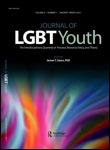
American Sign Language (ASL) is a natural language that serves as the predominant sign language of Deaf communities in the United States and most of Anglophone Canada. ASL is a complete and organized visual language that is expressed by employing both manual and nonmanual features. Besides North America, dialects of ASL and ASL-based creoles are used in many countries around the world, including much of West Africa and parts of Southeast Asia. ASL is also widely learned as a second language, serving as a lingua franca. ASL is most closely related to French Sign Language (LSF). It has been proposed that ASL is a creole language of LSF, although ASL shows features atypical of creole languages, such as agglutinative morphology.

Sign languages are languages that use the visual-manual modality to convey meaning, instead of spoken words. Sign languages are expressed through manual articulation in combination with non-manual markers. Sign languages are full-fledged natural languages with their own grammar and lexicon. Sign languages are not universal and are usually not mutually intelligible, although there are similarities among different sign languages.

William Clarence “Bill” Stokoe Jr. was an American linguist and a long-time professor at Gallaudet University. His research on American Sign Language (ASL) revolutionized the understanding of ASL in the United States and sign languages throughout the world. Stokoe's work led to a widespread recognition that sign languages are true languages, exhibiting syntax and morphology, and are not only systems of gesture.

Gallaudet University is a private federally chartered university in Washington, D.C., for the education of the deaf and hard of hearing. It was founded in 1864 as a grammar school for both deaf and blind children. It was the first school for the advanced education of the deaf and hard of hearing in the world and remains the only higher education institution in which all programs and services are specifically designed to accommodate deaf and hard of hearing students. Hearing students are admitted to the graduate school and a small number are also admitted as undergraduates each year. The university was named after Thomas Hopkins Gallaudet, a notable figure in the advancement of deaf education.

Washoe was a female common chimpanzee who was the first non-human to learn to communicate using signs adapted from American Sign Language (ASL) as part of an animal research experiment on animal language acquisition.
The American Manual Alphabet (AMA) is a manual alphabet that augments the vocabulary of American Sign Language.
A contact sign language, or contact sign, is a variety or style of language that arises from contact between deaf individuals using a sign language and hearing individuals using an oral language. Contact languages also arise between different sign languages, although the term pidgin rather than contact sign is used to describe such phenomena.

Plains Indian Sign Language (PISL), also known as Hand Talk or Plains Sign Language, is an endangered language common to various Plains Nations across what is now central Canada, the central and western United States and northern Mexico. This sign language was used historically as a lingua franca, notably for trading among tribes; it is still used for story-telling, oratory, various ceremonies, and by deaf people for ordinary daily use.
In sign languages, handshape, or dez, refers to the distinctive configurations that the hands take as they are used to form words. In Stokoe terminology it is known as the DEZ, an abbreviation of designator. Handshape is one of five components of a sign, along with location, orientation, movement, and nonmanual features. Different sign languages make use of different handshapes.
Gallaudet University Press (GUPress) is a publisher that focuses on issues relating to deafness and sign language. It is a part of Gallaudet University in Washington D.C., and was founded in 1980 by the university's board of trustees. The press is a member of the Association of University Presses. The press publishes two quarterly journals: American Annals of the Deaf and Sign Language Studies.
Games and Culture is a peer-reviewed academic journal that covers the field of culture and media studies, specializing on the socio-cultural, political, and economic dimensions of gaming. The editor-in-chief is Tanya Krzywinska. It was established in 2006 and is published by SAGE Publishing.
The sociolinguistics of sign languages is the application of sociolinguistic principles to the study of sign languages. The study of sociolinguistics in the American Deaf community did not start until the 1960s. Until recently, the study of sign language and sociolinguistics has existed in two separate domains. Nonetheless, now it is clear that many sociolinguistic aspects do not depend on modality and that the combined examination of sociolinguistics and sign language offers countless opportunities to test and understand sociolinguistic theories. The sociolinguistics of sign languages focuses on the study of the relationship between social variables and linguistic variables and their effect on sign languages. The social variables external from language include age, region, social class, ethnicity, and sex. External factors are social by nature and may correlate with the behavior of the linguistic variable. The choices made of internal linguistic variant forms are systematically constrained by a range of factors at both the linguistic and the social levels. The internal variables are linguistic in nature: a sound, a handshape, and a syntactic structure. What makes the sociolinguistics of sign language different from the sociolinguistics of spoken languages is that sign languages have several variables both internal and external to the language that are unique to the Deaf community. Such variables include the audiological status of a signer's parents, age of acquisition, and educational background. There exist perceptions of socioeconomic status and variation of "grassroots" deaf people and middle-class deaf professionals, but this has not been studied in a systematic way. "The sociolinguistic reality of these perceptions has yet to be explored". Many variations in dialects correspond or reflect the values of particular identities of a community.
Sign languages such as American Sign Language (ASL) are characterized by phonological processes analogous to those of oral languages. Phonemes serve the same role between oral and signed languages, the main difference being oral languages are based on sound and signed languages are spatial and temporal. There is debate about the phonotactics in ASL, but literature has largely agreed upon the Symmetry and Dominance Conditions for phonotactic constraints. Allophones perform the same in ASL as they do in spoken languages, where different phonemes can cause free variation, or complementary and contrastive distributions. There is assimilation between phonemes depending on the context around the sign when it is being produced. The brain processes spoken and signed language the same in terms of the linguistic properties, however, there is differences in activation between the auditory and visual cortex for language perception.

Black American Sign Language (BASL) or Black Sign Variation (BSV) is a dialect of American Sign Language (ASL) used most commonly by deaf African Americans in the United States. The divergence from ASL was influenced largely by the segregation of schools in the American South. Like other schools at the time, schools for the deaf were segregated based upon race, creating two language communities among deaf signers: black deaf signers at black schools and white deaf signers at white schools. As of the mid 2010s, BASL is still used by signers in the South despite public schools having been legally desegregated since 1954.
Terrorism and Political Violence is a peer-reviewed academic journal covering terrorism and counter-terrorism published by Routledge. It was established in 1989 by David C. Rapoport, who remains editor-in-chief. In the editorial manifesto in its first issue, it is referred to as the Journal of Terrorism Research; however, from its first issue until the present, in editorial statements and elsewhere, it is only ever cited as Terrorism and Political Violence.
Navajo Family Sign is a sign language used by a small deaf community of the Navajo People.
Ceil (Kovac) Lucas is an American linguist and a professor emerita of Gallaudet University, best known for her research on American Sign Language.

Carl Gustav Arvid Olof Croneberg was a Swedish-American Deaf linguist known for his work on American Sign Language (ASL).

The Journal of LGBT Youth is a quarterly peer-reviewed academic journal covering gender studies especially as pertaining to LGBT youth. It was established in 2003 as the Journal of Gay & Lesbian Issues in Education, obtaining its current title in 2008, and is published by Routledge. The founding editor-in-chief was James T. Sears, who was succeeded by Kristopher Wells.
Dorothy Chiyoko Sueoka Casterline was an American deaf linguist known for her contribution to A Dictionary of American Sign Language on Linguistic Principles, considered a foundational work of sign language linguistics.









